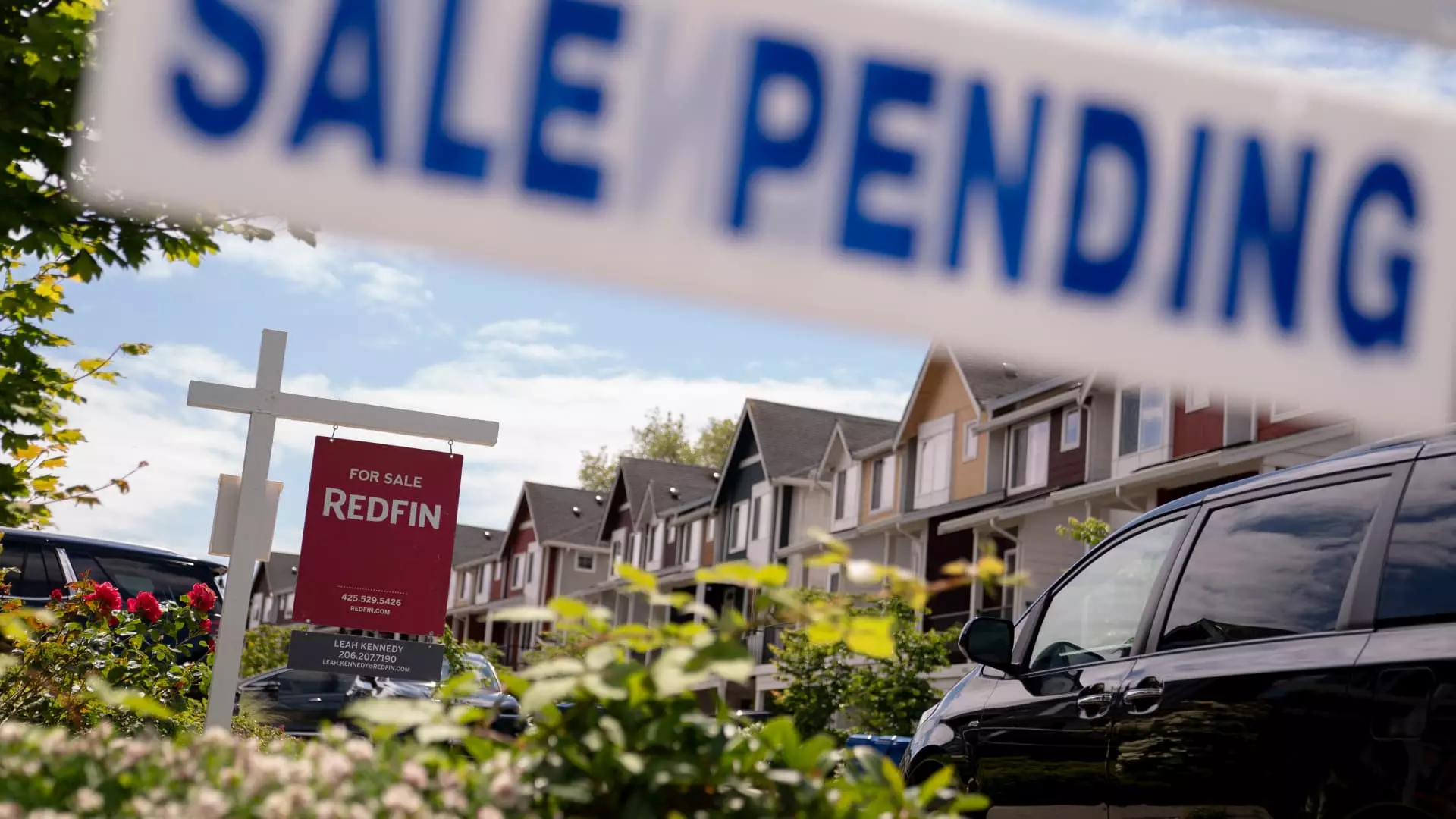In an environment where economic stability is paramount, the surge in mortgage rates to an alarming 6.81% signals unsettling shifts in the housing market dynamics. With rates hitting their highest since February, potential homebuyers are being squeezed into the precarious world of riskier loan options. This situation raises not just eyebrows but also significant concerns about the implications on affordability and overall market engagement.
This week’s figures from the Mortgage Bankers Association reveal an 8.5% drop in total mortgage application volume compared to the previous week, a clear reflection of the market’s anxiety-driven contraction. The rising costs have reverberated through the housing sector, marking a potential tipping point. For those seeking to buy homes in the fixed-rate mortgage segment—especially loans conforming to limits of $806,500—the increase to 6.81%, coupled with slight alterations in points to 0.62, reveals an urgent need for borrowers to rethink their strategies.
A Market in Flux: Demand vs. Inventory
Despite a dip in applications for home purchases by 5%, the year-on-year metrics appear misleadingly optimistic, showing a 13% increase. However, this climbing figure is overshadowed by a staggering 30% increase in active inventory when compared to the previous year. Realtor.com’s data suggests that the combination of heightened inventory and rising prices could lead to a speculative bubble if buyers are not careful. The paradox of increased options in the market colliding with steep prices creates a dissonance that homeowners are grappling to understand.
Economic uncertainty plays a pivotal role in fostering hesitation among potential buyers. According to Mike Fratantoni, the pressure of volatile rates has a chilling effect on anyone contemplating a home purchase, diversifying their concerns into yet another layer of financial decision-making. The shadow cast by increased home prices adds to the dilemma, as buyers are motivated to seek lower monthly payments even if it means venturing into riskier territory with adjustable-rate mortgages (ARMs).
The Rise of Risk: Embracing Adjustable-Rate Mortgages
As homeowners grapple with the financial constraints imposed by this volatile market, many are gravitating towards adjustable-rate mortgages. While these loans offer enticingly low initial rates, they also carry inherent risks due to their variable terms. Fratantoni notes a noticeable spike in the ARM share of applications, now at 9.6%, the highest since November 2023. Such a surge indicates not just a trend, but perhaps a desperate clutch towards affordability in an increasingly expensive market landscape.
With almost a quarter of application volume leaning towards ARMs, larger borrowers seem particularly inclined to pursue this route, finding themselves at a crossroads of potential savings against the backdrop of future uncertainties. The gamble here is that while initial costs may be lower, the fear of future adjustments can create financial volatility for these homeowners, making long-term planning increasingly fraught with danger.
Refinance Applications: A Conservative Retreat
Alongside new purchase applications, refinancing has also felt the brunt of rising interest rates, plunging by 12% in one week alone. Nevertheless, when viewed year-on-year, refinancing applications are a remarkable 68% higher than this time last year, indicating that many homeowners are still navigating the options to minimize costs post-rate surges. With past rates hovering 32 basis points higher, there remains a cautious optimism among those seeking to refinance; however, the volatility in today’s rates casts doubt over future sustainability.
As the week has transitioned, there has been a slight easing of rates, giving some hope to potential borrowers. However, experts like Matthew Graham echo a sentiment of caution. The temporary alleviation in costs should not lull anyone into a false sense of security; the potential for continued fluctuations looms large. This market reflects a dual-edged sword where opportunity exists, but it is heavily laced with uncertainty, demanding a level of awareness and strategic thinking that the average homebuyer may not possess.
In an era of soaring interest rates and fluctuating markets, it is clearer than ever that the home-buying landscape is anything but straightforward. The complexities facing potential buyers today underscore a larger narrative about the need for robust advice and well-informed decisions, lest they become casualties in a volatile real estate environment.


Leave a Reply